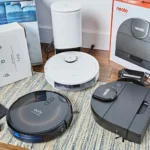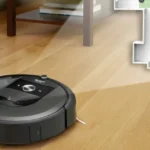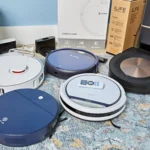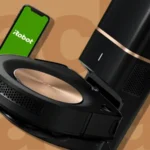As our homes become more integrated with technology, the market for smart home devices continues to expand. From smart speakers to home security systems, there’s no shortage of devices that can make our lives easier. One such example is the smart vacuum cleaner. But what makes these vacuums truly intelligent is their use of mapping technology. By utilizing this cutting-edge technology, smart vacuum cleaners can navigate our homes efficiently and customize their cleaning to meet our needs. In this article, we’ll explore the inner workings of mapping technology and how it’s transforming the way we clean our homes.
What is Mapping Technology?
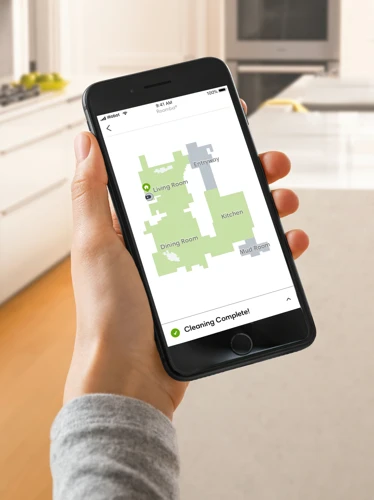
As technology continues to progress, it has impacted many aspects of our daily lives, including cleaning. One technology that has recently been incorporated into cleaning devices, particularly smart vacuum cleaners, is mapping technology. Mapping technology has transformed how smart vacuums navigate and clean spaces in our homes. Let’s take a closer look at what mapping technology is and how it has transformed smart vacuum cleaners. But before we dive in, be sure to check out our smart vacuum cleaner guide for more helpful information.
How Does Mapping Technology Work in Smart Vacuum Cleaners?
Mapping technology in smart vacuum cleaners is a powerful feature that enables the device to clean your home effectively and efficiently. It uses various sensors and cameras to create a map of the cleaning area, which is then used to guide the device during its cleaning process.
How does mapping technology work in smart vacuum cleaners?
Mapping technology in smart vacuum cleaners works by using a combination of sensors and cameras to collect data on the cleaning area. This data is then used to generate an accurate map of the area, which is stored in the device’s memory.
The mapping technology allows the smart vacuum cleaner to navigate around obstacles, such as furniture and other objects, with ease. The device uses the map to determine the best path to take, avoiding collisions and maximizing its cleaning efficiency.
The sensors and cameras in the device work together to provide real-time information about the cleaning area. They are capable of detecting changes in the environment, such as new obstacles or changes in lighting, and adjusting the device’s cleaning path accordingly.
The benefits of mapping technology in smart vacuum cleaners include:
| Efficient cleaning | Mapping technology allows smart vacuum cleaners to clean more efficiently by using an accurate map of the cleaning area to determine the best cleaning path. |
| Uninterrupted cleaning | Smart vacuum cleaners with mapping technology can clean uninterrupted as they navigate around obstacles with ease, ensuring that every part of the cleaning area is covered. |
| Customized cleaning | Mapping technology allows for customized cleaning as the device can be programmed to focus on specific areas that require more cleaning attention. |
| Future upgrades | Mapping technology is an evolving feature that can be upgraded with new software over time, ensuring that the smart vacuum cleaner stays up-to-date with the latest cleaning technology. |
Mapping technology in smart vacuum cleaners is a critical feature that enables the device to clean more efficiently and effectively. It uses sensors and cameras to create an accurate map of the cleaning area, allowing the device to navigate around obstacles and clean uninterrupted. By investing in a smart vacuum cleaner with mapping technology, you can enjoy a cleaner and healthier home with minimal effort. To learn more about other factors to consider before purchasing a smart vacuum cleaner, check out our article on smart home factors to consider before buying a smart vacuum cleaner.
Benefits of Mapping Technology
Mapping Technology is one of the key features of smart vacuum cleaners. It offers several benefits that can make cleaning much easier and efficient. Let’s take a look at some of these benefits in detail:
| BENEFITS | DESCRIPTION |
|---|---|
| Efficient cleaning | Mapping technology helps smart vacuums to clean more efficiently by creating a map of the cleaning area. This map guides the vacuum around the room, ensuring every part of the room is thoroughly cleaned. |
| Customized cleaning | Mapping technology enables the creation of customized cleaning schedules. By creating a map of the cleaning area, it is easy to program the vacuum to clean specific areas at specific times of the day. |
| Enhanced navigation | Smart vacuums with mapping technology can navigate around obstacles with ease. This is because these vacuums can detect and avoid obstacles using their sensors and cameras. |
| Improved battery life | Mapping technology ensures that smart vacuums clean every part of the room without retracing their steps. As a result, the vacuum does not need to use as much battery power, resulting in longer battery life. |
| Integration with other smart devices | Mapping technology allows smart vacuums to interact with other smart home devices. For example, the vacuum could communicate with smart lighting systems to ensure that the lighting in the room is optimized for cleaning. |
Mapping Technology is indeed a game-changer for smart vacuum cleaners. It offers several benefits that make cleaning much easier, efficient, and enjoyable. If you’re looking to upgrade your cleaning game, consider purchasing a smart vacuum with mapping technology.
How Mapping Technology Improves Smart Vacuum Cleaners
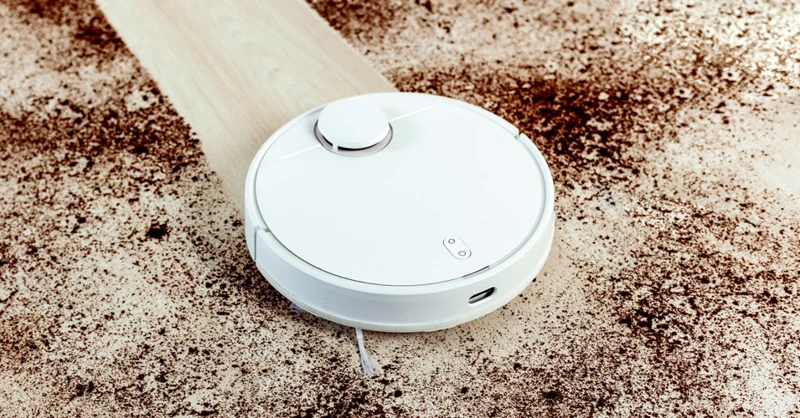
Mapping technology has revolutionized the way we clean our homes. With the help of this innovative technology, smart vacuum cleaners have become efficient and effective in providing customized cleaning. Mapping technology adds a whole new dimension to the capabilities of smart vacuums, providing benefits such as increased efficiency, enhanced navigation, and customized cleaning. Let’s explore how mapping technology improves smart vacuum cleaners in more detail.
Increased Efficiency
Mapping technology is a key element when it comes to improving the efficiency of smart vacuum cleaners. The technology allows smart vacuums to create a systematic cleaning pattern that cleans every inch and corner of your home. With mapping technology, smart vacuum cleaners can easily identify which areas they have already cleaned and where they should go next. This eliminates the need for the vacuum cleaner to go over an already cleaned area, making each cleaning cycle more efficient.
With the use of mapping technology, smart vacuums can identify areas that need more cleaning focus, such as high-traffic areas, where dust and debris tend to accumulate. As a result, cleaning becomes more targeted and the vacuum cleaner can focus its suction power in such areas, reducing the number of passes the vacuum has to make. This makes smart vacuums with mapping technology more efficient and time-saving.
Mapping technology helps smart vacuum cleaners to avoid obstacles such as walls or large pieces of furniture, which prevents them from bumping into objects or falling down the stairs. This not only enhances the lifespan of the vacuum cleaner but also prevents damage or accidents that can occur when vacuum cleaners run into walls, furniture or objects.
Mapping technology plays a crucial role in increasing the efficiency of smart vacuum cleaners. This technology ensures that every corner and inch of your home is thoroughly cleaned, while at the same time saving time, improving targeting of suction power and preventing damage or accidents. If you want more information about the suction power of smart vacuums and how to choose the right one for your home, you can check out /choose-smart-vacuum-suction-power/.
Enhanced Navigation
One of the most significant benefits of mapping technology in smart vacuum cleaners is enhanced navigation. With traditional vacuum cleaners, the robot would move randomly around the room, bumping into furniture and walls, spending a lot of time in one area, while missing other spots. Mapping technology resolves the issue by creating a floor plan of the room, which the vacuum cleaner then uses to navigate the space in the most efficient way possible.
Enhanced navigation is made possible through a combination of sensors, cameras, and mapping software. The smart vacuum cleaner uses a range of sensors and cameras to detect obstacles and determine the layout of the room. Then, it builds a map of the room and plans a cleaning route that covers every inch of the surface.
Mapping technology enhances navigation in several ways. Firstly, it allows the smart vacuum cleaner to avoid obstacles, such as furniture and walls, by detecting and adjusting its path accordingly. Secondly, it ensures that every part of the room is efficiently cleaned by planning a cleaning path that covers each spot once or multiple times depending on the dirt level detected by sensors.
Most smart vacuum cleaners now use a laser sensor to create a 3D map of the room. These sensors scan the room at a rate of thousands of times per second and create a highly detailed map that the vacuum cleaner uses to navigate. This technology allows the smart vacuum cleaner to clean even in low light conditions.
However, the accuracy of the mapping of the floor plan can be slightly off, especially during the initial cleaning session, causing the vacuum cleaner to bump into furniture or repeatedly clean an already clean area. Some latest smart vacuum cleaners use a technology called LIDAR that offers unprecedented accuracy in detecting and mapping the room.
Enhanced navigation is an outstanding feature of smart vacuum cleaners, which guarantees a highly efficient and thorough cleaning of the surface, which can be further enhanced by configuring noise reduction, selecting appropriate noise levels .
Customized Cleaning
Customizing cleaning is one of the main advantages of mapping technology in smart vacuum cleaners. Smart vacuum cleaners using mapping technology can create a precise map of your house or apartment, marking areas that require a more thorough cleaning.
Using the mapping feature, you can divide your home into zones with specific names such as “kitchen”, “bedroom”, or “living room”. By setting specific cleaning instructions for each of these zones, you can ensure that your smart vacuum cleaner will clean effectively and efficiently.
For example, if you have a pet, you can create a zone named “Pet Area” and instruct the smart vacuum cleaner to perform a deep clean in that zone to effectively remove pet hair and dander. Also, if you have sensitive areas in your home, you can designate them in the map for the vacuum cleaner to avoid.
Using this customized cleaning feature, you can save time and energy, as the vacuum cleaner will focus on the areas that actually require cleaning, rather than cleaning the entire house every time. It makes your smart vacuum cleaner a more efficient cleaning tool.
Some smart vacuum cleaners allow users to program the cleaning schedule based on their specific needs. You can select the appropriate day and time for cleaning various zones or the entire house, making sure that the vacuum cleaner does not start cleaning while you are at home or disturb your pet, for example.
You can also use this feature for targeted spot cleaning. You can manually guide your vacuum cleaner to a specific area that requires additional cleaning attention, and then save that spot for future cleaning purposes.
Customized cleaning is a great advantage of mapping technology in smart vacuum cleaners. It enables you to create a personalized cleaning strategy that meets your specific requirements, saves time and energy, and delivers a more effective cleaning performance.
If you want to learn more about other features of smart vacuum cleaners, such as HEPA filters, smart sensors, or factors that affect battery life (smart vacuum battery factors), be sure to check out our other articles.
Mapping Technology: The Future of Smart Vacuum Cleaners
As technology continues to advance, smart home devices are becoming more intelligent and user-friendly. Mapping technology is a recent development that has brought a new level of intelligence to smart vacuum cleaners. But this is just the beginning. The future of smart vacuums only looks brighter with advanced features and capabilities that are set to transform our cleaning experience. In this section, we will explore how mapping technology is evolving and what we can expect from the future of smart vacuum cleaners.
If you’re interested in the things you should consider while buying a smart vacuum with higher dustbin capacity, check out this article. Or if you’re a pet owner and looking to select the best smart vacuum for your furry friend, head over to our article on tips for selecting smart vacuums for pet owners.
Integration with Other Smart Home Devices
Mapping technology has revolutionized the smart vacuum cleaner industry, but it’s just the beginning. The future of smart vacuum cleaners will go beyond cleaning the floor. With the integration of other smart home devices, the vacuum cleaner will become even more versatile and multifunctional.
The integration with other smart home devices is a key feature of smart vacuum cleaners, providing endless possibilities to enhance your cleaning experience. Imagine your smart vacuum cleaner is integrated with your smart speaker – you can simply tell it to start cleaning, pause, or stop. This feature is not only convenient, but it also saves you time and effort.
Another smart home integration that is becoming increasingly popular is with smart door locks. When the smart vacuum cleaner detects that you have left the house, it can automatically lock your doors. This not only adds an extra layer of security to your home, but it also ensures that your house is secured while being cleaned.
Additionally, smart vacuum cleaners can be integrated with smart thermostats to optimize the energy savings of your home. The vacuum cleaner can detect the temperature of different rooms and adjust the heating or cooling accordingly, providing you with a comfortable living space and energy expense saving at the same time.
The integration of smart vacuum cleaners with other smart home devices provides a vast potential to improve your daily life. From its standalone cleaning function to being able to integrate with a range of smart devices around your home, it’s exciting to see what the future holds for smart vacuum cleaners. The smart vacuum cleaner is no longer just a cleaning device, but a hub for a smart home.
Improved Battery Life
Smart vacuum cleaners have come a long way in recent years thanks in part to advancements in mapping technology. One area where these devices have particularly excelled is in their battery life. With improved battery technology and mapping capabilities, modern smart vacuums are able to clean larger spaces with greater efficiency than ever before.
Key Factors Contributing to Improved Battery Life
| Factor | Explanation |
| Battery Capacity | Newer models feature larger batteries that can hold more charge, allowing for longer cleaning times. |
| Power Management | Smart vacuums now incorporate more advanced power management systems, which enable them to use power more efficiently and make the most of their battery life. |
| Mapping Technology | By using sensors and lasers to generate and navigate maps of their cleaning environment, smart vacuums can clean more efficiently, reduce wasted movements, and optimize their use of battery power. |
These key factors are all closely interconnected, working together to deliver a more reliable, efficient, and effective cleaning experience.
The Benefits of Improved Battery Life
The benefits of improved battery life in smart vacuums are numerous. Firstly, longer battery life means that these devices can clean larger areas without having to recharge, making them ideal for use in bigger homes or commercial spaces. This is particularly valuable for businesses that need to keep their floors clean but may not have the time or resources to do so manually.
Secondly, improved battery life allows for more efficient use of resources. Instead of having to constantly recharge, these devices can clean more effectively in one go, reducing their overall energy consumption and environmental impact. This is a great benefit for homes or businesses looking to reduce their carbon footprint.
Finally, improved battery life means less hassle for users. With longer cleaning times, smart vacuums require less attention and can be left to do their work uninterrupted, taking one more chore off the to-do list. Additionally, many modern smart vacuums can be controlled remotely using a mobile app, so users can set schedules or initiate cleaning from anywhere, making the process even more convenient.
The improvements in battery life that come with mapping technology have greatly enhanced the functionality and usability of smart vacuums. By optimizing power usage and increasing cleaning efficiency, these devices are able to tackle larger spaces with greater ease and provide their users with a more convenient and effective cleaning experience.
Advanced Mapping Capabilities
As mapping technology continues to advance in smart vacuum cleaners, so do the capabilities that come with it. Some of the advanced mapping capabilities that are being developed and implemented include:
- Object Identification: With advanced mapping capabilities, smart vacuum cleaners can identify objects within a room such as furniture, walls, and other obstacles. This allows for more precise mapping and navigation, helping the vacuum cleaner to avoid obstacles more effectively.
- Multi-Floor Mapping: Another capability that is being developed is the ability to create maps for multiple floors. This is useful for homes with multiple levels or for commercial spaces with several floors.
- Real-Time Mapping: With the ability to create real-time maps, smart vacuum cleaners can adapt to changes in their environment as they happen. For example, if there is a spill or a change in furniture placement, the vacuum cleaner can adjust its mapping and cleaning to accommodate the change.
- Automated Room Detection: Advanced mapping capabilities also allow for automated room detection. This means that the vacuum cleaner can distinguish between different rooms in a home, and create cleaning schedules accordingly.
- Customized Cleaning: With more advanced mapping capabilities, smart vacuum cleaners can also provide customized cleaning options. For example, users can create specific maps with designated cleaning zones for the vacuum cleaner to focus on.
All of these advanced mapping capabilities make smart vacuum cleaners even more efficient and effective in cleaning a variety of environments. As technology continues to evolve, it will be exciting to see what further advancements are made in the mapping capabilities of smart vacuum cleaners.
Conclusion
In conclusion, mapping technology has become the cornerstone of modern smart vacuum cleaners, delivering a range of benefits that most homeowners could only dream of just a few years ago. Through real-time mapping and advanced navigation algorithms, these innovative devices can clean homes faster and more efficiently than ever before while providing customized cleaning solutions.
The enhanced convenience and flexibility offered by mapping technology has made smart vacuum cleaners a must-have addition to any modern home. By taking advantage of the latest developments in robotics and machine learning, today’s smart vacuums can clean entire rooms with minimal human intervention, freeing up valuable time and energy for other activities.
As we look towards the future, the integration of mapping technology with other smart home devices is set to revolutionize the way we live. The potential for increased battery life and advanced mapping capabilities will only make these devices more effective and user-friendly.
Overall, mapping technology has transformed smart vacuum cleaners into an indispensable tool for homeowners, providing a more enjoyable and efficient cleaning experience. As technology continues to improve and evolve, we can expect to see even greater advances in the years to come, making our lives easier and more convenient than ever before. Whether you’re a busy professional or a stay-at-home parent, mapping technology offers an exciting vision of the future that we can all look forward to.
Frequently Asked Questions
What is the difference between mapping technology and random cleaning pattern technology in vacuum cleaners?
Mapping technology relies on sensors and mapping software to create a plan of the space being cleaned, while random cleaning pattern technology simply moves around the space randomly until it covers the entire area.
Can mapping technology be used in vacuum cleaners without a Wi-Fi connection?
Yes, mapping technology can still be used in vacuum cleaners without Wi-Fi by utilizing onboard sensors and software. However, a Wi-Fi connection may be necessary for more advanced features and integration with other smart home devices.
What is SLAM technology in relation to mapping technology?
SLAM stands for “Simultaneous Localization and Mapping,” and it is a technology used to create a map of an unfamiliar environment in real-time. In smart vacuum cleaners, SLAM allows the device to navigate and clean a space without bumping into obstacles or getting stuck.
How does mapping technology improve the efficiency of a vacuum cleaner?
Mapping technology allows a vacuum cleaner to create a plan of the space being cleaned, ensuring that every area is covered without wasting time or energy on already-cleaned areas. This reduces the amount of time it takes to clean a space and can conserve battery life as well.
What are the benefits of customizable cleaning options with mapping technology?
Customizable cleaning options with mapping technology allow users to prioritize certain areas or types of cleaning, such as spot-cleaning or cleaning around furniture. This allows for a more efficient and personalized cleaning experience.
Does mapping technology only work on hard floors or can it also be used on carpet?
Mapping technology can work on both hard floors and carpet, as long as the vacuum cleaner has appropriate sensors and software to detect and adjust to different surfaces.
Can mapping technology be used in vacuum cleaners with a low price point?
Mapping technology is becoming increasingly common in many brands and models of vacuum cleaners, including those with a lower price point. However, the features and capabilities of mapping technology may be less advanced on less expensive models.
What are some potential privacy concerns with mapping technology in smart vacuum cleaners?
Some users may be uncomfortable with the idea of a vacuum cleaner mapping and storing the layout of their home. Manufacturers of smart vacuum cleaners may have privacy policies or features to address these concerns, but consumers should be aware and informed of how their data is being used.
Will mapping technology eventually replace traditional random cleaning pattern technology in vacuum cleaners?
It is likely that mapping technology will become increasingly prevalent and advanced in smart vacuum cleaners, but it may not entirely replace traditional random cleaning pattern technology. Certain situations or spaces may still be better suited for the simplicity and flexibility of random cleaning patterns.
What are some other potential applications for mapping technology beyond vacuum cleaners?
Mapping technology has potential applications in the fields of robotics, autonomous vehicles, and even construction and architecture. It can also be used in augmented or virtual reality experiences for more accurate and realistic mapping of physical spaces.

